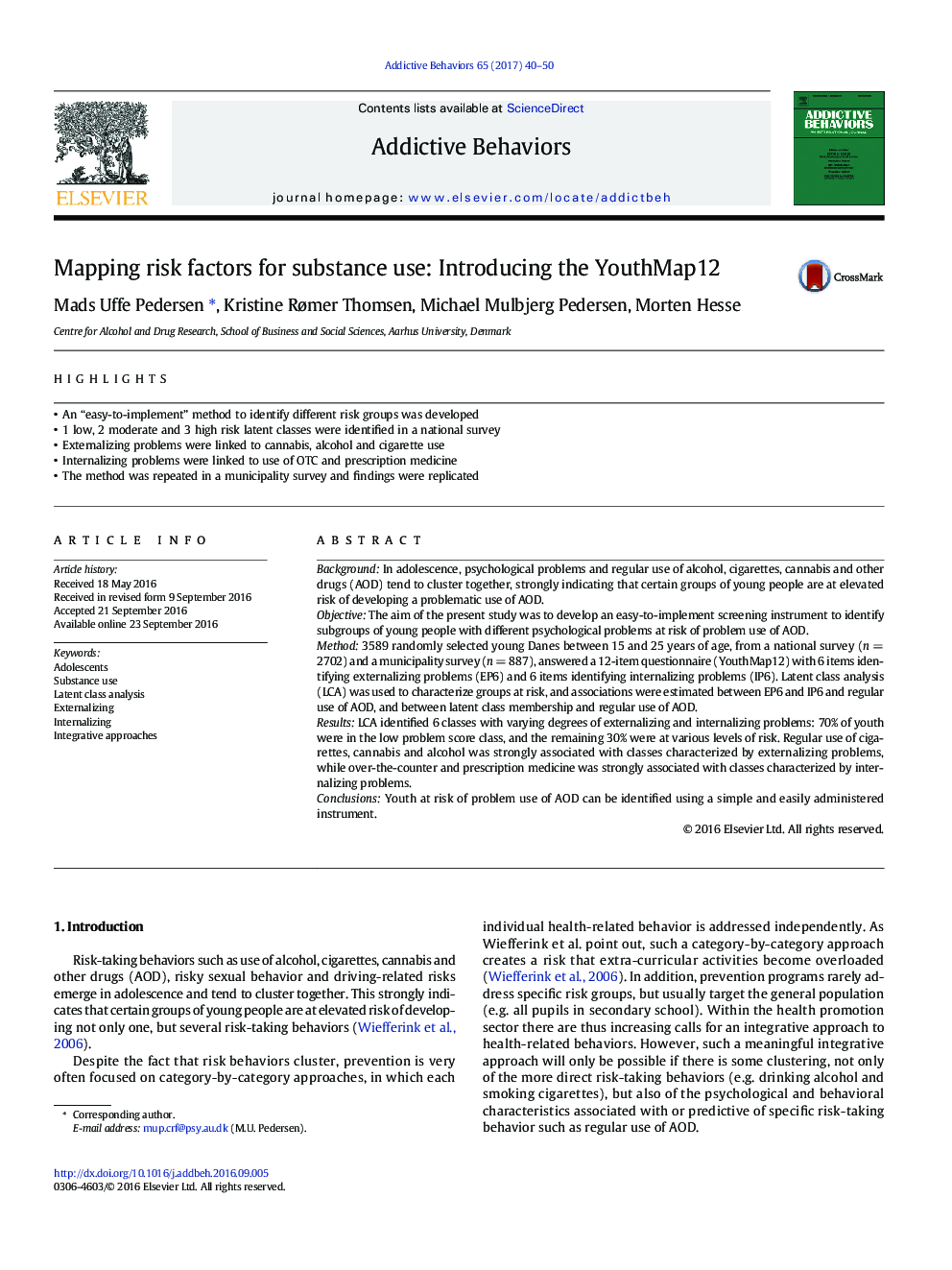| Article ID | Journal | Published Year | Pages | File Type |
|---|---|---|---|---|
| 5037890 | Addictive Behaviors | 2017 | 11 Pages |
â¢An “easy-to-implement” method to identify different risk groups was developedâ¢1 low, 2 moderate and 3 high risk latent classes were identified in a national surveyâ¢Externalizing problems were linked to cannabis, alcohol and cigarette useâ¢Internalizing problems were linked to use of OTC and prescription medicineâ¢The method was repeated in a municipality survey and findings were replicated
BackgroundIn adolescence, psychological problems and regular use of alcohol, cigarettes, cannabis and other drugs (AOD) tend to cluster together, strongly indicating that certain groups of young people are at elevated risk of developing a problematic use of AOD.ObjectiveThe aim of the present study was to develop an easy-to-implement screening instrument to identify subgroups of young people with different psychological problems at risk of problem use of AOD.Method3589 randomly selected young Danes between 15 and 25 years of age, from a national survey (n = 2702) and a municipality survey (n = 887), answered a 12-item questionnaire (YouthMap12) with 6 items identifying externalizing problems (EP6) and 6 items identifying internalizing problems (IP6). Latent class analysis (LCA) was used to characterize groups at risk, and associations were estimated between EP6 and IP6 and regular use of AOD, and between latent class membership and regular use of AOD.ResultsLCA identified 6 classes with varying degrees of externalizing and internalizing problems: 70% of youth were in the low problem score class, and the remaining 30% were at various levels of risk. Regular use of cigarettes, cannabis and alcohol was strongly associated with classes characterized by externalizing problems, while over-the-counter and prescription medicine was strongly associated with classes characterized by internalizing problems.ConclusionsYouth at risk of problem use of AOD can be identified using a simple and easily administered instrument.
